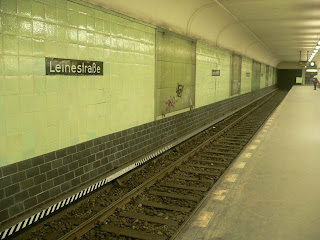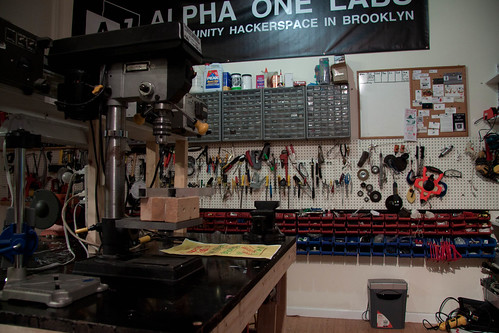Reading so many inspirations about cafes and coffee shops, I thought of students run cafes. What if students were running their own cafes and I found a couple of examples that I thought I'll share with you. What is particularly interesting is how they are described. Of course, there are coffee, sandwiches, pastries (all delicious, healthy and cheap I assume), but it's much more than that: a social space for socializing as well as working. They all aim to provide a community space. They also offer working opportunities and show an interesting entrepreneurial spirit.
They are all students run and were started often with the support of the office of students activities.
I haven't visited any of them. Please feel free to tell us if you had been to one of these students run cafes. Also if you have heard of any others, feel free to add a link in the comment.
Lunt cafe
http://students.haverford.edu/luntcafe/lunt/Lunt_Home.html
"What we do: The Cafe is more than a coffee shop; we're also a valuable student space. Lunt hosts club meetings and artistic/musical events. In addition, we always provide a relaxing, free Wi-Fi capable environemnt where students can study or simply hang out late into the night, seven days a week.
Lunt is the perfect place to sit down with your work or take a break from it. Grab a hot cup of coffee, try one of our famous milkshakes, or just curl up with a good book. Alternatively, get involved with one the many student events & activities that we host."
Cobb Coffee shop
https://studentactivities.uchicago.edu/services/coffeeshops.shtml
"The Scene:
Located in the basement of the largest lecture hall on campus, Cobb is a super convenient way to kill an hour between classes or dash in and out for a quick cup of coffee. Plus, the cafe's well lighted open space, displays of student artwork, great music, and wireless Internet access make us a desirable alternative to other campus dining services.
(...)
Insider's Tips:
Vinyl records, cheap breakfast, sassy staff. We're pretty sure we've created the hippest atmosphere on campus. The culture here can be summed up by a little saying we like to call "Cheap and Hot"."
Green house:
http://www.myfountainonline.com/greenhouse
"I started toying with the idea of creating such a space a few years ago," said Dawson Jones, 23, a linguistics and philosophy major and part-owner of the Greenhouse. "We define success not only in serving great coffees at student-friendly prices, but in creating a community that can help college students find their own place on campus."
The coffee shop is in a large, old, green house. It is simply decorated with comfortable seats, a study room, a music room, Wifi and board games. There is a yard where students can play football, soccer and table tennis. A climbing wall is scheduled to open within a week or so. Every Thursday night, the Greenhouse offers free pancakes in a variety of flavors.
The Greenhouse also is available for private events. (...)
"We want to not only create a study and hangout environment, but also to allow for fellow students to have a lounge space where they can organize events that relate to what they are interested in, whether it's poetry slams, acoustic concerts, soccer tournaments, or crafty parties," Jones said"
Second Wind
http://normantranscript.com/local/x1967875923/-x00b7-Campus-Corner-coffee-shop-run-by-student-volunteers
"Dave Lewis, Presbyterian campus minister, called it campus corner’s living room as he stood inside Second Wind Coffeehouse, with its art-covered walls and many seating niches.
Lewis said students and community members come for coffee drinks, for Friday night concerts by local musicians and to browse artwork by other Norman residents. Sometimes, people come just to hang around and be with other people.
This lingering may not be viewed as acceptable by other eateries, but at Second Wind, they not only tolerate this behavior, but welcome it.
“There’s a lot of people that just come to hang out and don’t get anything. We love that- that’s fine,” Josh Hammell, University of Oklahoma senior and student volunteer, said.
This is just one of the ways Second Wind stands out from other coffee shops in the area. Another is that they are a registered non-profit ran completely by about 15 student volunteers, mainly made up of university students at First Presbyterian Church. Lewis said the students do everything from develop business plans to book bands to make drinks.
The building, Hammell explained, is owned by the church, which is basically next door to the coffee shop. The purpose of the ministry is not evangelical or religious, though, he said.
“We’re just trying to create a community space,” Hammell said.
One way they are doing that is by keeping a steady stream of local musicians in the shop. Depending on the atmosphere the band wants to create, Hammell said the space can hold anywhere from 20-100 people. With the space’s wooden floors and the coffee house’s sound system, Hammell said bands are treated with nice acoustics in the place. The shop also is alcohol and smoke-free, which means people who come for the bands are usually there for the music, Hammell said.
The type of sounds that can be found at Second Wind varies week to week.
“We’ve had everything from acoustic artists to nine-person bands with brass sections,” Hammell said.
Many concerts, Hammell said, are produced in the name of charity, benefiting everything from fair trade to Food and Shelter for Friends to support for victims of the Haiti earthquake.
“Depending on the show, we’ll raise hundreds of dollars for the organization we’re trying to support,” Hammell said. (...)"














































